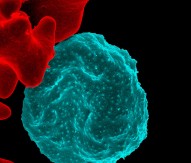
Historical differences in human jaw discovered
Hunter-gatherers had almost no malocclusion and dental crowding, and the condition first became common among the world’s earliest farmers some 12,000 years ago in Southwest Asia, according to research supported by the European Research Council and led by University College Dublin (UCD).
After analysing the lower jaws and teeth crown dimensions of 292 archaeological skeletons from the Levant, Anatolia and Europe from between 28,000-6,000 years ago, the international team of scientists discovered a clear separation between European hunter-gatherers, Near Eastern/Anatolian semi-sedentary hunter-gatherers and transitional farmers, and European farmers, based on the form and structure of their jawbones.
Speaking about the research, lead author Professor Ron Pinhasi of UCD said: “Our findings show that the hunter-gatherer populations have an almost “perfect harmony” between their lower jaws and teeth, yet this harmony begins to fade when you examine the lower jaws and teeth of the earliest farmers.”
In the case of hunter-gatherers, the scientists found a correlation between inter-individual jawbones and dental distances, suggesting an almost “perfect” state of equilibrium between the two. Yet in the case of semi-sedentary hunter-gatherers and farming groups, they found no such correlation, suggesting that the harmony between the teeth and the jawbone was disrupted with the shift towards agricultural practices and sedentism in the region. Scientists say this could be linked to the dietary changes among the different populations.
The diet of the hunter-gatherer was based on “hard” foods like wild uncooked vegetables and meat, while the staple diet of the sedentary farmer is based on “soft” cooked or processed foods like cereals and legumes. With soft cooked foods there is less of a requirement for chewing which in turn lessens the size of the jaws but without a corresponding reduction in the dimensions of the teeth, there is no adequate space in the jaws and this often results in malocclusion and dental crowding.
The findings are published in the journal PLOS ONE.






